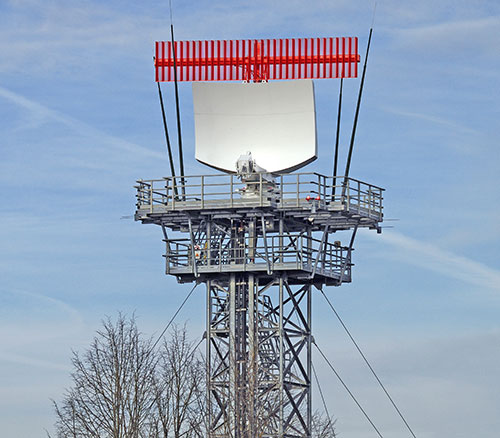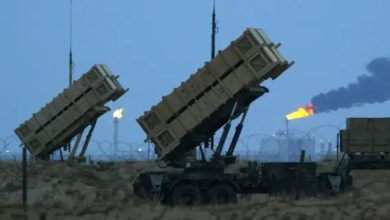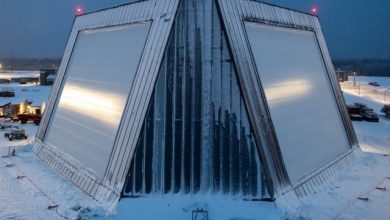
Introducing ASR-NG: The Future of Airport Surveillance Technology by HENSOLDT
ASR-NG is a multi-beam 3D S-Band solid-state air traffic control primary and secondary surveillance radar and en-route monitoring sensor, adhering to ICAO Annex 10 Volume III/IV and EUROCONTROL Surveillance Standard Requirements. The system incorporates a fully digital Doppler detection and tracking mechanism, featuring adaptive and self-optimizing clutter and site capabilities.
The ASR radar solutions comprise an integrated primary and secondary radar system. The primary radar assists in identifying non-cooperative entities such as small aircraft lacking transponders or adversarial aircraft. It utilizes a semiconductor transmitter and integrates advanced signal processing techniques for extensive area surveillance and wind farm mitigation. Meanwhile, the secondary radar, MSSR 2000 I, guarantees the automatic recognition of cooperative aircraft.
Outstanding Detection & Tracking from Ultra-light to Supersonic
The airspace globally is utilized by civilian and military operators, encompassing general aviation traffic as well as sports or recreational aircraft. To avert safety-critical scenarios, cutting-edge ATC radars must deliver superior detection capabilities, ranging from the tiniest vehicles like ultra-light gliders to the largest passenger jets. Modern radar systems also need to distinguish between slow-moving rotary-wing craft and high-speed military jet fighters without significant blind speed gaps. The lack of awareness of potentially non-cooperative aerial traffic, particularly during military operations, can result in near-miss situations or erroneous air traffic control guidance. ASR-NG can identify targets as small as 0.5m² up to 10,000m² with the highest probability of detection, offering outstanding no-blind speed coverage from 0 to 1,200 knots.
Wind Farm Interference & 4G/LTE Resilience
Amid the swiftly increasing influence of disruptive environments like wind farms and telecommunications such as 4G/LTE services, it is crucial for air traffic control radars to navigate highly dynamic clutter scenarios and resist 4G/LTE impacts effectively.
Innovative Multi-Beam Processing
While earlier generations of ATC radars struggled to minimize false alerts stemming from wind farms, ASR-NG offers unparalleled detection, resolution, and tracking performance through its industry-first, concurrent triple-beam processing and electronic beam forming features. Its ability to detect and track small rotary-wing aircraft over wind farms is field-validated, as confirmed by the UK Ministry of Defence.
Distinctive 3D Capability
By utilizing a third horn antenna feed, the ASR-NG also presents a unique attribute of 3D target detection. This third beam facilitates the estimation and calculation of altitudes for non-cooperative targets like aircraft with either non-functional transponders or defective/disabled Identification Friend-Foe (IFF) signals – particularly during military drills or flight operations.
Minimal Life-Cycle Costs & Long-Term Viability
With almost no preventive upkeep necessary, the ASR-NG system has been engineered for fully autonomous, unmanned, and entirely remote-controlled 24/7/365 operations. The transfer of maintenance expertise to the customer or a preferred local partner constitutes the standard logistics support approach. Fixed-price support arrangements and supply guarantees are offered for 25 years and beyond.
HENSOLDT is a trailblazer in technology and innovation within the defense and security electronics domain. Located in Taufkirchen near Munich, the company stands as a German Champion with strategic leadership roles in sensor solutions for both defense and civilian applications.
HENSOLDT pioneers the development of innovative products to address a myriad of threats through advanced approaches in data management, robotics, and cybersecurity. With approximately 5,500 staff members, HENSOLDT achieved revenues of 1.14 billion euros in 2019.










